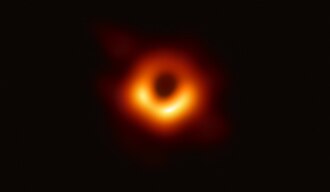Yesterday three emminent scientists, two from the US and one from Germany, Reinhard Genzel from the Max Planck Institute for Astrophysics in nearby Garching , were awarded this years Nobel Prize for Physics. Their contribution to the theory (Roger Penrose) and the identification and visualization of black holes in the universe (Andrea Ghez and Reinhard Genzel) were acknowledged.
 | |||
| This is just an artists drawing of the possible close view of a black hole. |
The question arises what kind of matter a black hole is composed of, and does this matter at all ?

So what we know about black holes is that they are the source of extremely strong gravitational force. A black hole in the center of our galaxy (the milky way) exerts a gravitational force to the surrounding stars that is equivalent to 4.1 million solar masses M☉, or 8.2×1036 kg. Its diameter is calculated as 3 x 10(x10) km, as compared to the suns diameter of 1.4 x 10(x6) km. Because of this, its density (which is responsible for inducing curvature of the space-time) is roughly 7 x 10(x13) times higher than the average density of the earth. There is element that we know which under normal conditions can be as dense. A sugar-cube size piece of this black hole would weight 56 million tons. This is similar to the mass density of an atomic nucleus. But there, the size is limitted to the radius of the largest transuranium elements, about 10(x-15) m, and it is believed that all nuclei that exceed this limit become unstable and fision.
A black hole of similar density is not only stable, but it even happily increases in mass and size. In my view, other candidates for the type of black hole matter are free quarks, isolated Higgs bosons or pure energy. Since according to Einsteins mass-energy-equivalence, pure energy of sufficient density would also excert a strong gravitational force.
But do black holes matter at all, or are they just an object for scary movies and academic research ? No, I think they matter a lot. Perhaps its a black hole which by its strong gravitational force keeps the milky way (our universe) together.
No comments:
Post a Comment